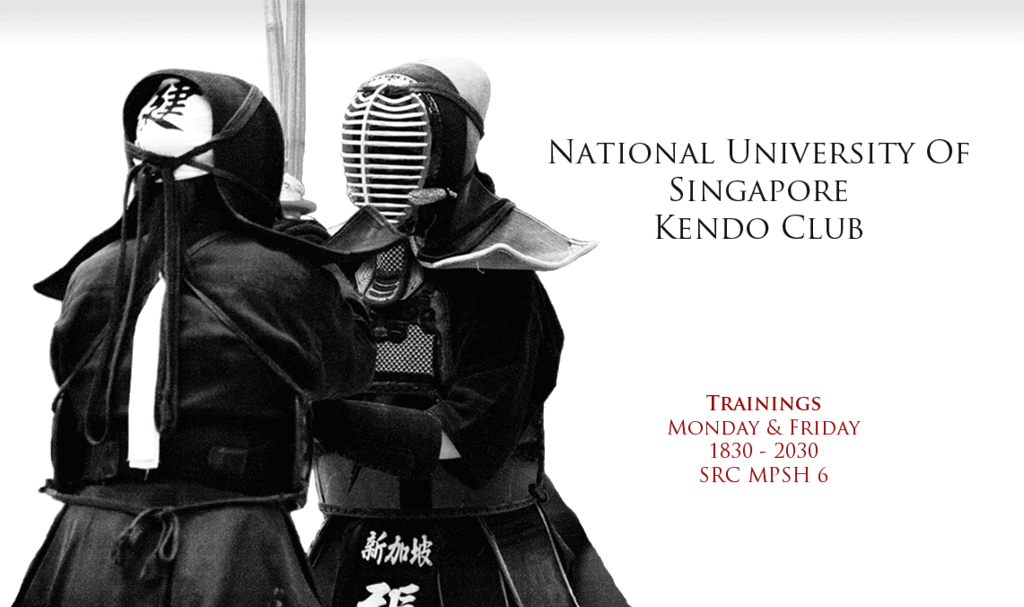On the 6th of June 2010, the NUS Kendo Club participated in the 16th East-West tournament.

The East-West tournament is a team-based kendo tournament that is carried out every year. Participants are divided into two opposing side, the East and the West. Participants are slotted into their side purely by virtue of their local address. Each side would then battle their way to the finals in a series of matches for their side till a side is declared the winner.
Today we interview two of our kendokas, Chee Fung and Wei Lun, about their East-West experience.
---------
Wei Lun: “This is only the second tournament that I’ve attended at the Changi dojo, and the first official one I’m participating in. Prior to the tournament, I had been asking the seniors this question: 'What is the tournament like?' The answer I got most was: 'It’s a fun tournament'. Truth be told, I didn’t quite believe that then. How can tournaments be fun?”
Chee Fung: “The East-West tournament is a also very unique tournament because apart from the annual Youth Kendo Tournament, it is the only other kendo tournament which is team-based. Also, there is a special segment in the tournament, the long team match.”
Wei Lun: “Basically, it’s a giant team match featuring 15 kendokas from each side, fighting consecutively, hence the term ‘Long match’. Arranged according to kyu (grade) and age, it started from the children and ended with the Senseis.”
Chee Fung: “Despite it’s competitive nature, I feel that East-West is a tournament about making friends above anything else. In this tournament, teams are formed from all the various kendo clubs in Singapore, according to each kendoka’s grade. It is not unusual to join a team without knowing anyone.”
Wei Lun: “I was the only one from NUS on my team! I did not know any of the other two girl and two guy team-mates I had, but the whole point of random sorting, in my view, is to encourage us to know each other!”
Chee Fung: “The East-West tournament is an opportunity to make new friends in your team. Usually, each kendo club trains only among themselves and the only chance where you get to see other club kendokas is during combined training... or at the opposite end of the shiai-jo as opponents! I particularly like the idea where total strangers form up a team and fight together to the end. This year I was honored to join in with a team consisting of NYP and SKC kendokas. Together we managed to obtain the champion in the team matches. Lucky!”
Wei Lun: “I too thought I was lucky to have been in a good team and had a good run to the finals, where we fell to the might of our President Chee Fung! Just joking, both teams were evenly matched, and it took a Taichou (captain) match to settle the result. Well fought, with great spirit on each side, and no animosity.”
Chee Fung: “Kendo matches are in a way brutal: once just two points are taken from you, you are out! However in team battle, it’s the team’s overall victory that ensures advancement. For example, one may have lost his/her match but as long his/her team-mate manages to win or draw their matches such that their team’s overall points outweigh that of the opposing team’s, they can still proceed!
Personally I like team matches as it’s less of personal pride and glory, but team effort that counts! Despite the short time we spent together, I could feel the team spirit building as we moved up together. A simple supportive “Faito (fight)” or “Ganbattee (keep going!)” or just “go, go, go!” from your teammate can boost the your fighting spirit during the match!”
Wei Lun: “With the team match settled--by the way, both finalist teams were from the EAST! :D-- we moved on to the ‘Long match’. Vice-Captain Weber, unluckily left out of the team matches, was one of the kendokas on the East team. He won his match with a display that earned him the nickname “men-Machine”, hitting more men attacks in his fight than some of us did during our whole tournament experience!
The matches between the higher dan levels and especially the senseis were really eye opening—and in the case of the final match between Suresh sensei and Martin sensei—jaw dropping! It was an experience like no other, with each reacting to the opponent’s strikes even before the strikes reached them, feints countering feints, strikes so fast that they left us bewildered. I did not dare blink for the duration of the fight, for to blink was to miss the moment. Alas, reflexes took over just as Suresh-sensei made a move. One blink, point scored. I had no idea where he struck, and neither could my friend. Martin-sensei was equally fast. Several blurred strikes later, the dust settled, and the tournament was over. Awesome!”
Wow, sounds like the tournament was just as exciting for those of us observing and not doing the fighting! Now, any last comments for us about your tournament experience?
Chee Fung: “In the end, I felt that NUS Kendo Club performed well as we managed to have members obtaining the Bronze, Silver and Gold trophies. But what I felt was the true prize we gained is the sparkling smiles of friendship as each team posed for their individual team photos. The East-West tournament ended with a delightfully good feeling… (probably because of the extremely tasty bread too.)
For those who missed it, the next East-West is just a year away! Till then J”






























